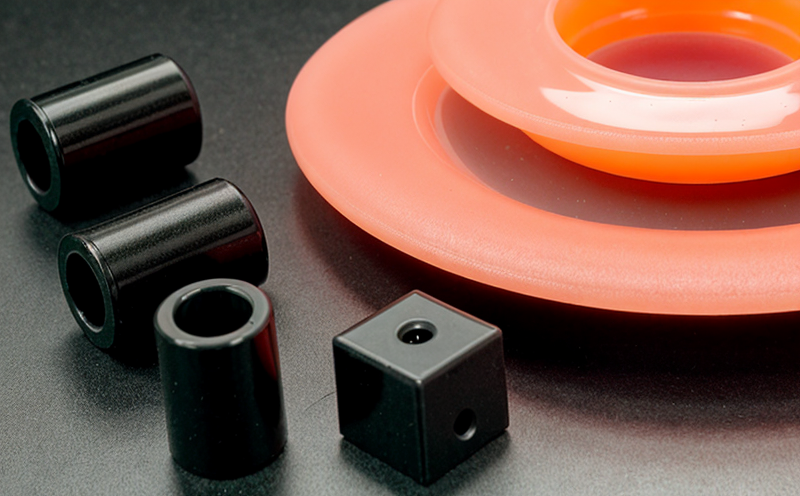ISO 22196 Antibacterial Activity Testing of Plastic Sports Gear
The ISO 22196 standard is pivotal in assessing the antibacterial properties of materials, particularly relevant for plastic sports gear. This testing ensures that products meet stringent hygiene standards and are safe for use by athletes and consumers alike. The standard outlines a method to determine the minimum inhibitory concentration (MIC) of an antimicrobial agent against specific bacteria on the surface of plastic materials.
Antibacterial activity tests are crucial in the sports and leisure industry where equipment is often shared or used in high-humidity environments, which can foster bacterial growth. Compliance with ISO 22196 helps manufacturers to ensure their products meet regulatory requirements and enhance consumer trust. This testing process involves several key steps:
- Specimen preparation: The plastic sports gear is cut into standardized samples, typically 25 mm x 25 mm.
- Incubation and growth: Specimens are inoculated with a known quantity of bacteria, usually Staphylococcus aureus or Escherichia coli, depending on the product type.
- Dilution series: A dilution series is prepared to determine the MIC, which represents the lowest concentration at which no visible bacterial growth occurs.
- Assessment and reporting: The results are evaluated based on the absence of visible bacterial colonies after incubation. Reporting includes MIC values and compliance with industry standards.
The testing process is rigorous, ensuring that plastic sports gear can maintain a hygienic environment for users. This is especially important in high-contact or shared equipment scenarios such as swimming pools, gyms, and team sports.
Understanding the MIC value helps manufacturers optimize their formulations to enhance antibacterial properties while maintaining the integrity of the material. The process also allows quality assurance teams to identify potential weaknesses in the design or manufacturing process that could compromise hygiene standards.
Scope and Methodology
| Step | Description |
|---|---|
| Specimen Preparation | The plastic sports gear is cut into standard 25 mm x 25 mm samples, ensuring uniformity for testing. |
| Inoculation | Specimens are inoculated with a known quantity of bacteria, typically Staphylococcus aureus or Escherichia coli. |
| Dilution Series Preparation | A series of dilutions is prepared to determine the minimum inhibitory concentration (MIC). |
| Incubation and Growth Assessment | The specimens are incubated, and bacterial growth is assessed visually. |
| Reporting | The results are documented, including MIC values and compliance with ISO 22196 standards. |
International Acceptance and Recognition
The ISO 22196 standard for antibacterial activity testing is widely recognized across the globe. Countries and organizations that adopt this standard ensure a consistent approach to evaluating antibacterial properties, which is crucial for international trade in sports equipment.
Adopting ISO standards enhances the reputation of manufacturers who comply with these rigorous tests. It demonstrates commitment to quality and safety, fostering trust among consumers and regulatory bodies. Compliance can also lead to increased market share as it aligns products with global best practices.
The standard has been adopted by various sectors including healthcare, sports equipment manufacturing, and consumer goods industries. By adhering to ISO 22196, companies ensure their products meet the highest hygiene standards, thereby protecting public health and safety.
Environmental and Sustainability Contributions
The use of antibacterial properties in sports equipment can contribute positively to environmental sustainability. By reducing bacterial growth on surfaces like pool decks or gym floors, the need for frequent cleaning is minimized, thus saving resources such as water and energy.
Manufacturers who incorporate ISO 22196-compliant materials into their products are not only enhancing hygiene but also promoting eco-friendly practices. This approach reduces waste by extending the lifespan of equipment and reducing the frequency of product replacements due to contamination issues.
The testing process itself involves rigorous scrutiny, ensuring that materials used in sports gear are both effective and sustainable. By adhering to these standards, manufacturers contribute to a more responsible use of resources and promote long-term environmental benefits.





